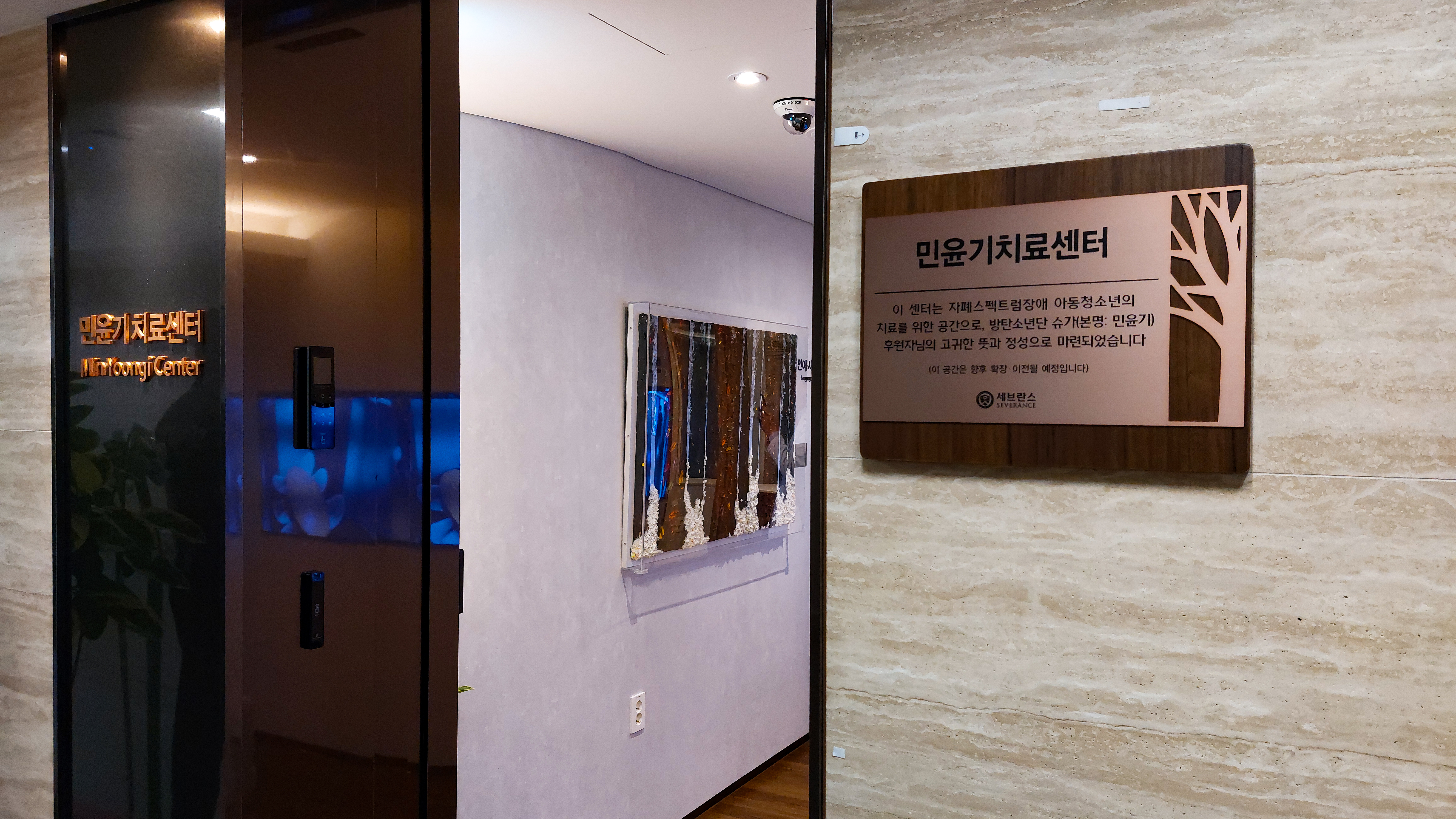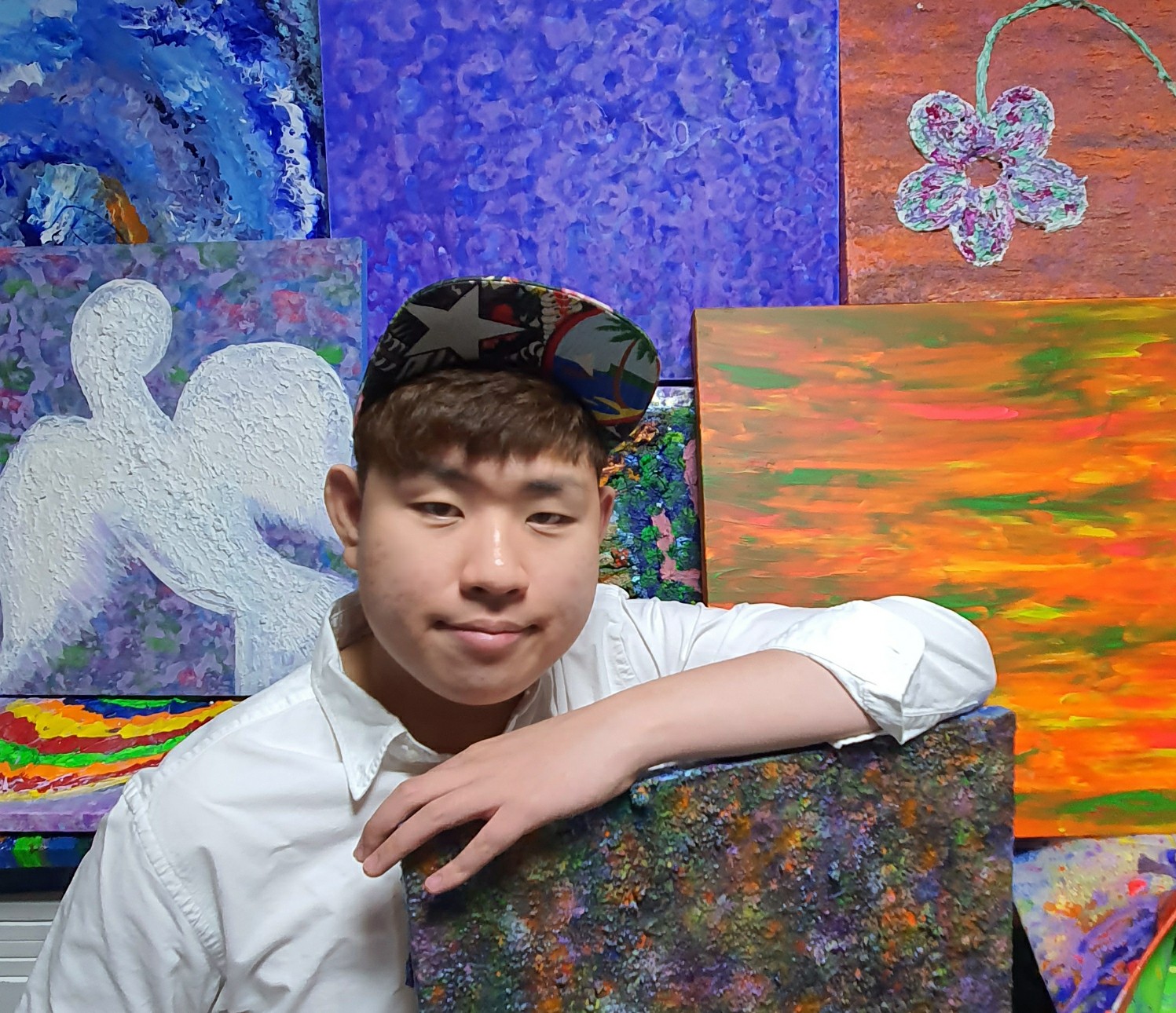[INTERVIEW] Lee Kyu Jae: Colors of Hope and the Healing Power of Art at the Min Yoongi Center
2025-10-19In a world where everyone strives to be heard and understood, art becomes the very door that unlocks the path to self-expression, self-acceptance, and connection with others. This is especially crucial for individuals with Autism Spectrum Disorder (ASD), whose unique perspective on the world sometimes requires a special key.
At the Min Yoongi Center, created with love and care for children and adolescents with ASD, this key has taken shape in the canvases of Lee Kyu Jae – a talented artist whose own journey to healing and self-discovery lies through vibrant colors.
The opening of the Min Yoongi Center at Severance Hospital on September 30th was not just another event for me to cover, but an encounter with something profound and genuine. Amidst the numerous guests and official speeches, I noticed the paintings of Lee Kyu Jae, an artist with ASD. There was nothing accidental or contrived in these works – only pure, sincere emotion, expressed through bold colors and unusual textures.

At that moment, I was once again convinced: art is not just beautiful images, it’s a way to see the world through another person’s eyes, to understand their feelings and experiences. This is especially important for people with ASD, whose unique perspective often goes misunderstood. And that’s precisely why I wanted to tell the story of Lee Kyu Jae and his art.
His works, filled with deep sincerity, have become not just a decoration for the walls of this important center, but a source of inspiration and hope for those seeking their own way to self-expression and acceptance.
Immediately after the center’s opening ceremony, I contacted him through social media on September 30th and offered an online interview. To gain deeper insights into his unique perspective, he kindly provided detailed written answers to my questions. Let’s delve into his world through the prism of his own words.
Could you provide specific examples of how your unique way of seeing, hearing, and experiencing the world is reflected in your works?
I am very sensitive to visual and auditory stimuli. Sounds are perceived by me louder than by others, and all visible objects enter my field of vision simultaneously. Therefore, when leaving home, I always wear a hat, which gives me a sense of security, and when going out to find themes for my paintings, I take a digital camera with me. The square lens of the camera allows me to focus on what I want to see, without being distracted by surrounding objects. When I get home, I save the photos I’ve taken to my computer and work on my pieces, basing them on these images. When painting, I mix earth or sand into the paints to give them volume, instead of simply using a flat color fill. I like the tactile, rough texture that you can feel with your fingertips.

What do you consider most important in your way of self-expression, and what message do you want to convey to viewers through your paintings?
When creating paintings, I draw and color stories from my inner world. When I’m sad, painting helps me to open up and feel better. I really want everyone who sees my works to experience joy.
Do you remember the most important moment or turning point in your artistic journey when art truly empowered you?
During my time in school, most subjects were difficult for me. My grades were also low. I wanted to succeed, but studying seemed difficult. However, when I received an award at the European Art Competition for People with Autism, my friends and teachers applauded me, I explained my works at an exhibition where a piece with my name was displayed, and I saw everyone around me nodding, I realized that I have my own strengths, and the confidence that art is what I do best strengthened within me. Since then, I’ve been painting even harder and have loved painting even more.
What advice would you give to other artists with unique sensory perceptions who are seeking their path in art?
Art doesn’t need formal teaching methods or exam rules. I believe that painting should be honest, because through it I depict myself. There are various components within me that shape my personality, and one of them is autism. This is a very important element that makes up me as a person. Therefore, autism is visible in my paintings. And I don’t intend to hide this part of myself. Therefore, I believe that neurodiverse people with unique sensory characteristics who are engaged in art should express themselves honestly, through their own forms of self-expression.
How did your works end up in the Min Yoongi Center and contribute to strengthening the mental health of children and adolescents?
I have known Professor Cheon Keun Ah (director of the Min Yoongi Center) from Severance Hospital for a long time. She visited my personal exhibition, looked at my works, bought several paintings, and these paintings are now displayed in the Min Yoongi Center. I am happy that I can inspire younger students who love art, give them hope for communication through painting. Since I am a resident artist of the Seoul Foundation for Arts and Culture, owner of works stored in the National Museum of Modern and Contemporary Art (Seoul Exhibition), and actively participate in various events, receiving awards at competitions, I am a well-known artist. Professor Cheon Keun Ah probably concluded that this would bring emotional benefits to the Min Yoongi Center at Severance Hospital.
What does it mean to you that your paintings are exhibited in a center that helps children and adolescents with Autism Spectrum Disorder? Do you feel a special connection to this important cause?
I am 26 years old now. I still remember my difficulties during my time in school. I remember days when I cried all day, feeling sad. Perhaps my younger students are going through difficulties now as well. However, I want to show them that it is possible to become a confident adult, doing what you love and being an active member of society. I want them to have dreams, looking at me, and not feel alone.
What reaction do you hope to see from the children and adolescents visiting the Min Yoongi Center when they see your works? What kind of inspiration would you like them to draw from your pieces?
I want my younger students who see my paintings to feel emotions, looking at the colors, to feel joy, looking at the lines, and to have the desire to try painting themselves.
What kind of support do you think art can provide to people with Autism Spectrum Disorder?
Art has tremendous power, allowing me to recognize my existence and develop positively. Everyone wants their name to be called, to be recognized and praised.
Do you plan to continue collaborating with the Min Yoongi Center or other similar organizations in the future?
In the future, wherever I am and whoever I meet, if there is such an opportunity, I want to show my paintings, communicate, and become friends. I also want to meet friends with autism abroad. I will continue to paint without stopping. I am waiting for many people who will become my friends.
Through his art, Lee Kyu Jae not only tells about himself, he shows how one can find their voice and be heard, despite any difficulties. His paintings in the Min Yoongi Center are not just decorations, they are hope for those seeking their path to self-expression. Each piece is an invitation to a world of sincerity, where there is no place for prejudice. It’s a story about how art can become a bridge between hearts and help everyone find their place in this world.
How about this article?
- Like9
- Support0
- Amazing0
- Sad0
- Curious0
- Insightful0


